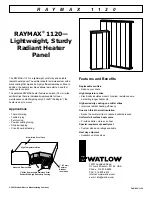
7.3 Backwash, Blowdown, Tank Cleaning
The flushing should be done by a specialist.
1. Stop the water flow.
2. Close the valves (1) both in inlet and outlet.
3. Connect a water hose for backwash with the
drain valve (2). Open the drain valve (2). Use, if
possible, only deionized water for best results.
4. Open the valve at the bottom of the elector and
drain the flushing water.
If no water comes out of the valve please stick
a wire carfully through the valve into the elector
to release sludge and impurities. If you have no
success with this procedure you have to open
the elector as described in the chapter anode
replacement. The elector has to be cleaned
through the opening on the top in this case.
In case of impurities which stick to the inner
surface of the tank you should consider using a dilluted natural acid for cleaning, eg. citric acid.
CAUTION!! Always neutralize the tank after cleaning with acid!
Please flush the elector as long as only clean water comes out of the device. Close the valve at the bottom of
the elector and the drain valve (2) as soon as the elector is filled with water completely.
5. Open the valves (1) after flushing and take the pumps into operation. Control the water flow at elector devices
in bypass installation.
6. Please record the measurement values in the elector maintenance form.
The following intervals should be considered:
- 1. flushing 4 weeks after installation of the elector.
- 2. flushing after 4 additional weeks.
As soon as the flushing water is clean and clear from the very first beginning you should switch into an
annual flushing interval. Otherwise you need to flush in 4 to 8 weeks again.
Under normal operation the elector has to be maintained once a year as part of the annular heating system
check.
If the elector is installed in a new system, the flushing intervals can be omitted after installation. In this case,
a flushing in the annual rhythm is sufficient.
7.4 Control of Water Quality
As part of the maintenance, the pH value and the electrical conductivity of the heating water must be
documented. We also recommend a comprehensive water analysis in the laboratory.
Outlet
Inlet
1
2
3
4
5
6
8
10
11
12
7
9
elector
Anode mA
m
3
0 1
2
3
4
5
6
7
8
9
0 1
2
3
4
5
6
7
8
9
0 1
2
3
4
5
6
7
8
9
0 1
2
3
4
5
6
7
8
9
0 0 0 0 0
min. Distance 400 mm
Page 14
www.elector-water-treatment.com
elector – Electrochemical Water Treatment for Heating Systems






































